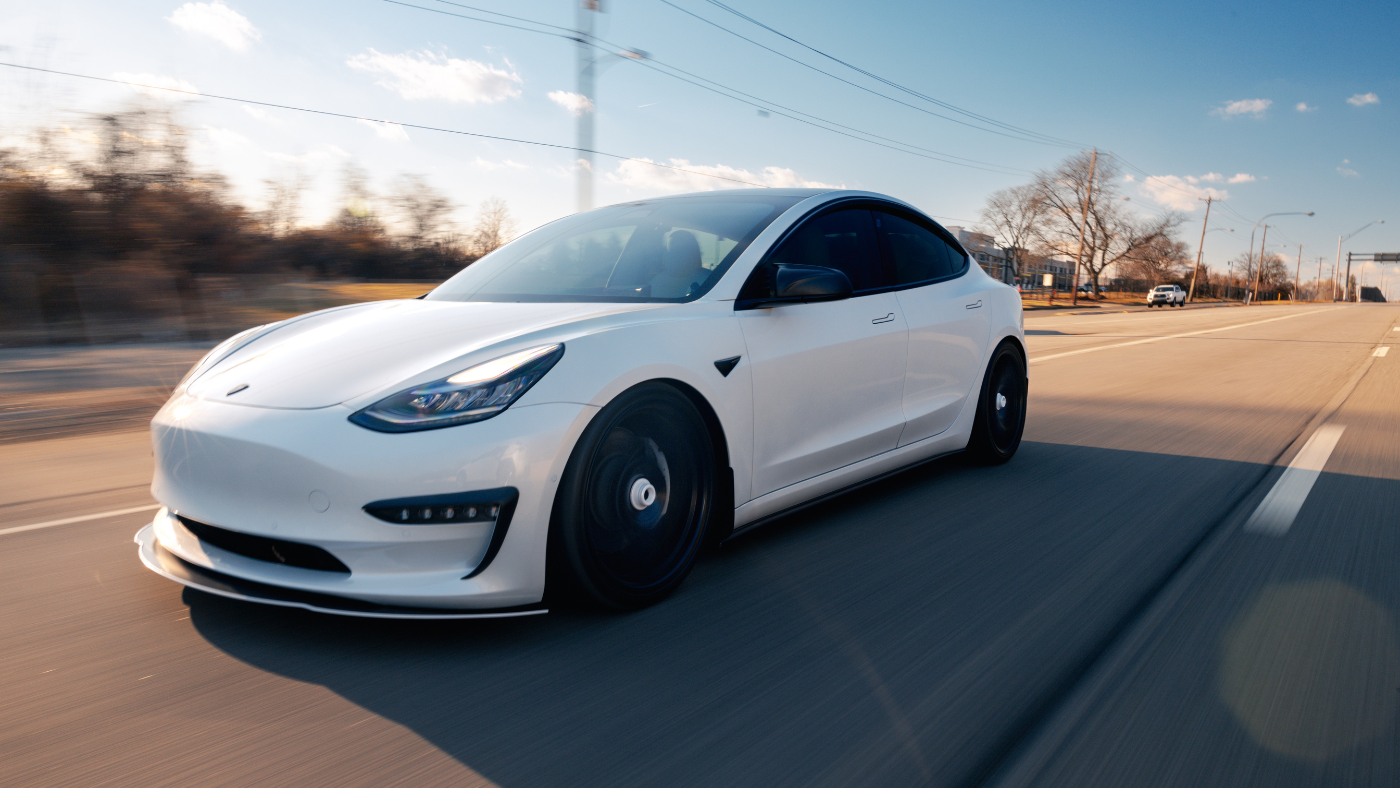Looking for an explanation why your electric car windshield replacement costs double that of your old gas guzzler?
61% of drivers in the market for a new vehicle are seriously considering an electric vehicle, up from 38% in 2021. That means millions of new EV drivers are about to learn something surprising…
But first, let’s get one thing straight:
Windshield replacement on an electric car isn’t more expensive, it’s a completely different process.
By the end of this article, you’ll understand:
- Why do EV windshields cost more to replace?
- Advanced Technology Integration Differences
- ADAS Calibration Requirements for EVs
- Specialized EV Installation Procedures
- Finding the Right EV Windshield Service
EV Windshield Replacement: The Electric Vehicle Difference
Let’s get one thing straight…
The average windshield replacement for an electric car can set you back $1,000+.
Compare that to traditional gas-powered vehicles where a standard windshield replacement might cost you $300-$600, tops.
What’s with the massive price difference? Good question…
EVs are loaded with technology that gas-powered cars never dreamed of. So, when you go in for that professional windshield replacement service on your electric vehicle, you’re not just paying for the glass, you’re paying for advanced sensor and camera technology and high-tech calibration equipment.
Here’s a quick overview of what sets EV windshields apart from the rest:
- Built-in defroster elements
- Unique UV-protective coatings
- Sensor and camera housing
- Anti-glare technology
- Acoustic dampening
And don’t even get us started on the glass itself. EVs use much thicker glass, with multiple layers that conventional vehicles don’t need.
Advanced Tech Integration: Electric Car Windshields v. Traditional Vehicles

Hang on, it gets better…
Traditional vehicle windshields are simple. Pop the old one out, stick the new one in, clean up the place, and drive off.
EVs, not so much.
Electric car windshields often directly interface with the vehicle’s computer systems. Think Tesla Model X panoramic windscreens that integrate with the climate control system and even the car’s autopilot sensors.
The real game-changer here? Nearly every electric vehicle on the market today has at least some level of Advanced Driver Assistance Systems (ADAS) equipped with cameras and sensors mounted in or around the windshield area, including:
- Lane Departure Warnings
- Automatic Emergency Braking
- Adaptive Cruise Control
- Collision Avoidance Systems
That means any time you replace an electric vehicle windshield, ALL of those systems must be recalibrated, or they may not work correctly.
ADAS Calibration for Electric Vehicle Windshields: The Surprising Truth
If you think windshield replacement for EVs is expensive, just wait till you find out what ADAS calibration will run you…
ADAS calibration alone can tack on another $200-$400+ to your final bill.
That’s no joke.
ADAS calibration is an absolute necessity for safety reasons and it’s not an “extra” like you might see with gas-powered cars. Nope, this one’s not optional.
How does ADAS calibration work?
EV windshield replacements require two primary types of calibration:
1. Static Calibration
This calibration occurs in a stationary setting, using fixed targets and specialized equipment. A technician will set up highly specific targets around your vehicle and use advanced tools to aim all the sensors and cameras again.
Static calibrations are more costly because they’re more laborious and involve specialized gear.
2. Dynamic Calibration
This is the calibration that happens on the road while you drive the car. Technicians use special diagnostic equipment to recalibrate the systems as you drive.
Dynamic calibrations are usually faster and cheaper than static ones.
But here’s the catch…
Most electric vehicles today require both types of calibration. That’s why the prices are so high, pun intended.
Electric Car Windshield Installation v. Traditional Windshields: What’s the Difference?
Installing an electric vehicle windshield isn’t as simple as replacing one for a conventional vehicle.
Here’s the thing most people don’t get:
Electric cars often have unique frame styles and mounting brackets. The streamlined aerodynamic design of EVs means that windshields are shaped differently and use specialized installation methods.
Consider the BMW i-series or Tesla lineup. Their windshields are an integral part of the car’s aerodynamics to increase efficiency. Mess that up and you might end up with:
- Lower battery range
- Increased wind noise
- Inefficient climate control
- Reduced safety performance
EVs also often use different adhesives. Polyurethane glues used for EVs are specially designed to handle the distinct stress and strain that these cars put on windshields.
Windshield installation for an EV includes:
- Full system diagnostic check before removal
- Specialized tools to handle EV-specific mounting brackets
- Precision alignment
- Multiple calibration steps
- Full system diagnostics and testing after installation
Most traditional auto glass shops can’t do this correctly.
How to Find an Electric Vehicle Windshield Service You Can Trust
Here’s the deal most EV owners learn the hard way…
Not all windshield repair shops can handle electric vehicles.
You need to look for a shop that specializes in electric car windshields and has the right equipment, training, and experience with your specific vehicle make and model.
Check out these services to ensure:
- EV-specific technician training and certification
- Advanced diagnostic tools and equipment
- ADAS Calibration capabilities
- Brand experience with your vehicle make and model
- OEM glass options available
Ask these questions before making your decision:
- Do you have experience working with my specific EV model?
- What type of calibration will my car require?
- Do you use OEM glass or aftermarket options?
- How long before I can drive post-replacement?
- What is your warranty on the replacement?
Saving a few bucks at the wrong place could lead to an improperly installed windshield and completely non-functional safety features.
Where We’re Headed with EV Windshields in the Future
Curious about what the future holds for EV windshield tech?
EV windshields are just getting started when it comes to built-in high-tech features. Manufacturers are already developing even more advanced capabilities that we’ll see in new electric vehicles:
- Augmented reality displays and heads-ups
- Solar charging capabilities
- Advanced noise canceling
- Adaptive tinting technologies
Those extra features won’t lower windshield replacement costs. If anything, they’ll drive the price even higher as more advanced features become standard equipment.
That’s the good news though. As EVs get more advanced and more popular, the glass service industry will continue to innovate and specialize as well.
EVs are about to become a massive slice of the automotive glass market. As more and more get on the road, you’ll start to see more specialty shops specializing in EV windshields, and that means more standardization and, potentially, lower costs down the road.
Windshield Replacement on an Electric Vehicle v. Traditional Car Wrap Up
Windshield replacement on an electric vehicle is a totally different game than the same service on a traditional vehicle.
The main differences include:
- Higher cost due to integrated technology
- Complex ADAS calibration steps
- Specialized installation procedures
- Need for highly trained EV technicians
- Direct integration with vehicle computer systems
Sure, it costs more. But that’s not just for fancy new tech glass, it’s for the specialized experience and equipment required to service modern electric vehicles. As more EVs hit the road, these services will only get more standardized (and perhaps cheaper).
The Bottom Line: If you own or drive an electric car, plan on budgeting at least twice as much for windshield replacement than you would for a traditional car. And never skimp on quality. Cutting corners on installation or calibration can compromise your safety and vehicle performance.

